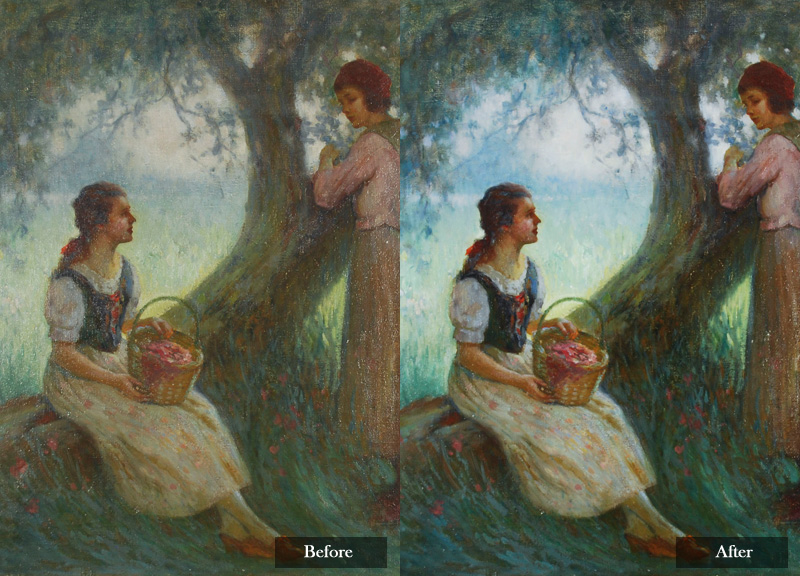Introduction
For art collectors and restorers, preserving the integrity of oil paintings is paramount. One crucial aspect of this preservation is removing varnish, a protective layer applied to enhance the painting’s appearance and longevity. However, over time, varnish can yellow or discolor, distorting the original colors and textures of the painting. In such cases, removing the varnish becomes necessary to restore the artwork to its former glory.
Understanding Varnish

Image: www.winsornewton.com
Varnish is a clear, protective coating applied to oil paintings after they have fully dried. It creates a barrier between the paint surface and the environment, protecting it from dust, dirt, and moisture. Varnish also enhances the painting’s appearance by deepening colors, increasing gloss, and providing a uniform finish.
Why Remove Varnish?
Although varnish provides protection, it can deteriorate over time. The most common sign of varnish degradation is yellowing or discoloration, resulting in a loss of color accuracy and clarity. Additionally, varnish can become brittle and crack, compromising the integrity of the painting. In some cases, varnish can also react with the underlying paint layer, causing chemical changes that alter the painting’s composition. To preserve the artwork and maintain its original appearance, removing the varnish becomes essential.
Methods for Varnish Removal
The choice of varnish removal method depends on several factors, including the age of the painting, the type of varnish, and the condition of the paint surface. Here are the most common techniques used by professional conservators:
1. Solvent Method
This method involves using a solvent, such as acetone or turpentine, to dissolve the varnish. Solvents are applied to the painting’s surface using a cotton swab or soft brush, taking care not to damage the paint layer. The dissolved varnish is then wiped away gently. This method is suitable for removing relatively soft varnishes from stable paint surfaces.
2. Gel Method
The gel method involves applying a gel containing a solvent to the painting’s surface. The gel is left to dwell on the varnish for a period of time, allowing the solvent to penetrate and soften the varnish. Once the varnish has softened, it can be removed using a soft brush or spatula. This method is gentler than the solvent method and is suitable for removing more delicate varnishes from fragile paint surfaces.
3. Mechanical Method
The mechanical method involves using a scalpel or other sharp tool to physically scrape away the varnish from the painting’s surface. This method is rarely used, as it requires considerable skill and precision to avoid damaging the paint layer. It is typically employed for removing thick or hardened varnishes that cannot be removed by solvents or gels.
Preparing for Varnish Removal
1. Evaluate the Painting
Before removing varnish, it is essential to carefully evaluate the painting’s condition. This involves examining the painting for any signs of damage, such as tears, cracks, or flaking paint. If any damage is found, it should be repaired before attempting to remove the varnish.
2. Test the Removal Method
Once the painting has been evaluated, a test area should be chosen to test the selected varnish removal method. A small, inconspicuous area of the painting is treated with the solvent or gel to ensure that it does not adversely affect the paint layer.
3. Gather Materials
Gather all necessary materials, including solvents, gels, cotton swabs, soft brushes, spatulas, and protective gear.
Step-by-Step Varnish Removal Process
1. Solvent or Gel Application
Using the chosen method, apply the solvent or gel to the painting’s surface. Work in small sections, applying a thin, even layer. Allow the solvent or gel to dwell on the varnish for the recommended time, typically a few minutes to several hours, depending on the method used.
2. Removing the Dissolved Varnish
Once the varnish has softened, gently wipe or scrape away the dissolved varnish using a soft brush, cotton swab, or spatula. Avoid using excessive pressure or scrubbing, as this can damage the paint layer.
3. Cleaning the Surface
After the varnish has been removed, clean the painting’s surface to remove any residual solvent or gel. Use a soft cloth dampened with distilled water or a mild detergent solution to gently wipe the surface. Allow the painting to dry completely before applying a new varnish or protective layer.

Image: www.artconservationrestoration.com
How To Remove Varnish From Oil Painting
Conclusion
Removing varnish from oil paintings requires meticulous attention to detail, a thorough understanding of the materials and techniques, and a steady hand. By employing the appropriate methods discussed in this article and following the step-by-step process, art collectors and restorers can ensure the preservation and restoration of their valuable oil paintings, restoring them to their original beauty.